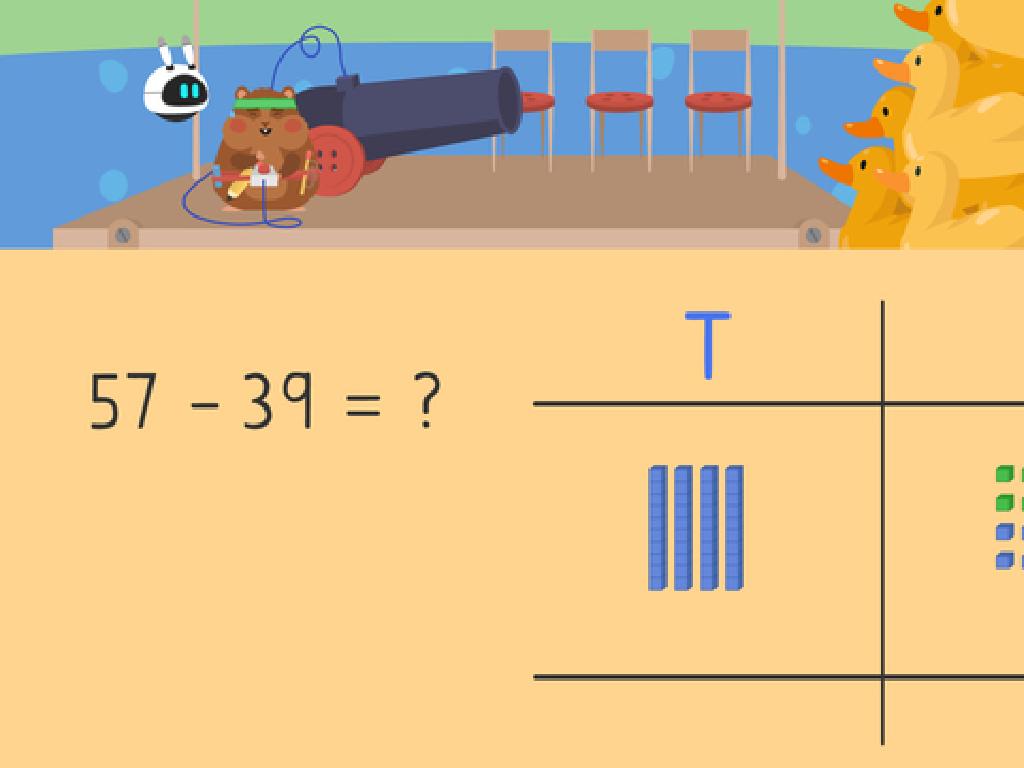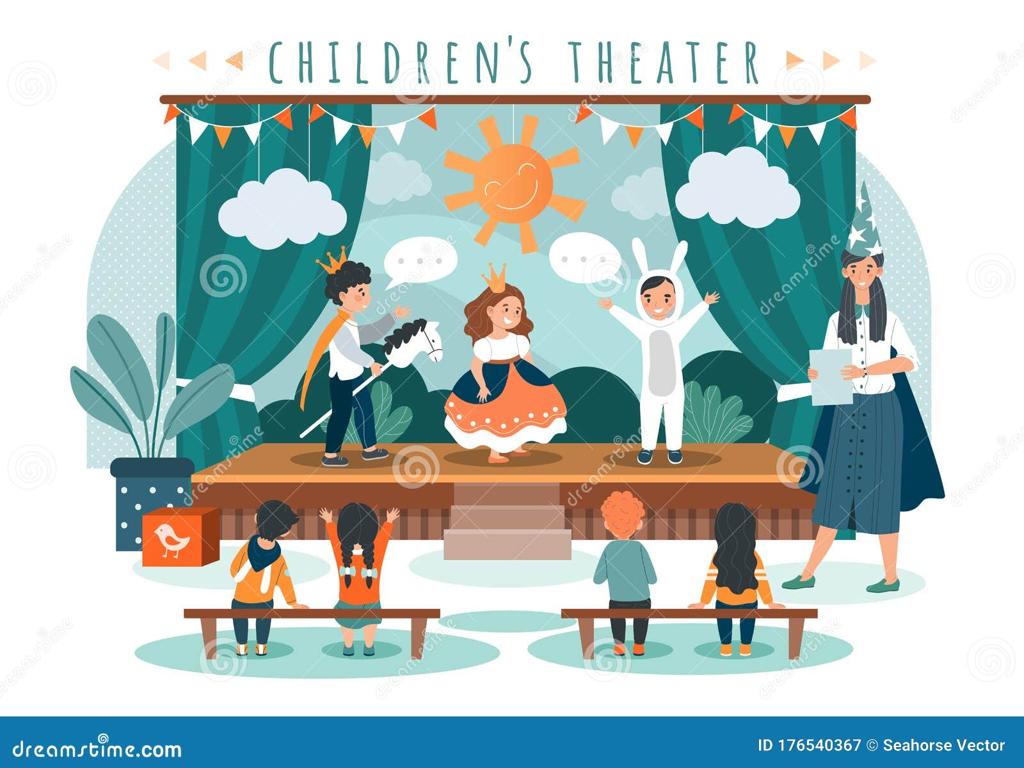Identify Parts Of The Engineering-Design Process
Subject: Science
Grade: Seventh grade
Topic: Engineering Practices
Please LOG IN to download the presentation. Access is available to registered users only.
View More Content
Exploring the Engineering-Design Process
– Introduction to Engineering
– Engineering-Design Process
– A series of steps engineers use to solve problems.
– Significance in Engineering
– It’s crucial for creating efficient and effective solutions.
– Class Activity: Design Challenge
– Design a simple paper airplane to understand the process.
|
This slide introduces students to the concept of engineering and the engineering-design process, which is a systematic approach to problem-solving used by engineers. Emphasize the importance of this process in developing innovative solutions and improving existing technologies. The class activity involves students designing a paper airplane, which will help them understand the iterative nature of the design process, including defining the problem, brainstorming, planning, creating, testing, and improving their designs. Provide guidance on how to approach the design challenge and encourage creativity and experimentation.
The Engineering-Design Process
– Define the Engineering-Design Process
– A series of steps for solving problems
– It’s a cycle of development
– Engineers test and refine their designs repeatedly
– Key steps: Ask, Imagine, Plan, Create, Improve
– Each step is crucial for developing effective solutions
– Continuous improvement is essential
|
This slide introduces students to the Engineering-Design Process, which is fundamental to solving engineering problems. Emphasize that it’s an iterative process where engineers continually improve their designs through testing and refinement. The key steps – Ask (understand the problem), Imagine (explore ideas), Plan (select a promising solution), Create (build a prototype), and Improve (make it better) – are essential for students to understand as they form the backbone of the engineering design cycle. Highlight the importance of not being afraid to go back to previous steps to make further improvements. Provide examples of how each step might look in a real-world scenario, such as designing a bridge or a new toy.
The Engineering Design Process: Step 1 – Ask
– Define the problem clearly
– What needs to be solved? State it simply.
– Determine the requirements
– What must the solution achieve? List needs and wants.
– Identify who is affected
– Who will benefit or be impacted by the solution?
– Consider constraints and criteria
– What limitations are in place? Think about resources, time, and materials.
|
This slide introduces the first step of the engineering design process, which is crucial for setting the stage for effective problem-solving. Students should understand that clearly defining the problem is the foundation of the process. They should consider the requirements, which are the needs that must be met for a successful solution, and the criteria, which are the desired specifications and features. Identifying the stakeholders, or those affected by the problem, helps ensure the solution is user-oriented. Constraints such as time, budget, and materials limit the solution space and must be acknowledged from the start. Encourage students to think critically about real-world problems they observe and how they might define and approach solving them.
Step 2: Imagine – Engineering Design Process
– Brainstorm multiple solutions
– Think of as many ways as possible to solve the problem.
– Encourage creative, wild ideas
– No idea is too ‘out there’ the sky’s the limit!
– Select the most promising approach
– Choose an idea that seems the best fit for the problem.
– Consider constraints and resources
– Keep in mind what materials you have and any limits.
|
This slide focuses on the ‘Imagine’ step of the engineering-design process, where students are encouraged to think creatively and without limitations to generate a wide range of potential solutions. Emphasize the importance of considering all ideas, as sometimes the most unconventional ones can lead to the best solutions. After brainstorming, students should evaluate the ideas based on feasibility, available resources, and constraints to select the most viable approach. Encourage them to think about the practical aspects of their designs. This step fosters creativity and critical thinking, essential skills in the engineering process.
Engineering Design Process: Planning
– Draw detailed diagrams
– Diagrams visualize the project structure
– List and gather materials
– Materials needed for the construction
– Estimate time requirements
– Time management is crucial for project completion
– Calculate potential costs
– Budgeting helps manage expenses effectively
|
This slide focuses on the third step of the engineering design process: Planning. Students should understand the importance of creating detailed diagrams as a visual representation of their project, which serves as a blueprint for construction. Emphasize the need to compile a comprehensive list of materials before beginning the project to ensure all necessary items are available. Discuss the significance of time estimation in project planning to set realistic deadlines. Finally, introduce the concept of cost calculation to help students learn to budget and consider the financial aspect of their designs. Encourage students to think critically about each element and how it contributes to the overall success of their engineering project.
Step 4: Create and Test
– Execute your design plan
– Test the created solution
– Does the solution work as expected? If not, why?
– Record problems encountered
– Keep a detailed log of issues for analysis
– Note any alterations made
– Adjustments are part of the process; document them
|
This slide focuses on the ‘Create’ phase of the engineering-design process, where students are encouraged to bring their plans to life and construct their designs. Emphasize the importance of following the plan closely while being flexible to make changes as needed. Testing is crucial to evaluate if the design meets the goals set out in the planning phase. Any problems that arise should be documented in detail, as this information is vital for troubleshooting and making informed adjustments. Remind students that encountering problems is a normal part of engineering and that documenting these, along with any changes made to the original plan, is essential for learning and improving the design.
Engineering Design Process: Step 5 – Improve
– Analyze the implemented solution
– Look at how the solution works and find areas for improvement
– Make necessary modifications
– Adjust the design to fix issues or enhance performance
– Retest the solution
– Test the modified solution to see if the changes were effective
– Redesign as needed for optimization
– If problems persist, go back to the drawing board
|
This slide focuses on the ‘Improve’ phase of the engineering design process, which is critical for refining and perfecting a solution. Students should understand that analyzing the solution is about evaluating what works well and what doesn’t. Modifications are then made to address any shortcomings. Retesting is crucial to ensure that the changes have had the desired effect and that no new issues have arisen. Redesign may be necessary if the solution still isn’t up to standard. Emphasize that this is an iterative process and may need to be repeated multiple times to achieve the best possible outcome. Encourage students to think critically about each step and to understand that failure is a valuable part of learning and improving a design.
Engineering-Design Process: Real-World Example
– Real-world example explained
– Consider a bicycle: design begins with identifying the need for efficient transportation.
– Significance of each design step
– Each step, from brainstorming to prototyping, is vital for functionality and safety.
– Impact on the final product
– The iterative process ensures the bike is user-friendly, durable, and meets consumer needs.
|
This slide aims to illustrate the engineering-design process through a tangible example that students can relate to, such as the development of a bicycle. Begin by explaining how the need for efficient transportation leads to the conceptualization of the bicycle. Discuss how brainstorming, research, designing, prototyping, testing, and refining are all critical steps that contribute to the bike’s final design, ensuring it is safe, efficient, and meets the needs of consumers. Emphasize the iterative nature of the process, where feedback leads to continuous improvements. Encourage students to think of other everyday items and how they might have been developed through a similar process.
Class Activity: Design Your Own Solution!
– Identify a community problem
– Work in groups on a design
– Collaborate to brainstorm and plan
– Apply the engineering-design process
– Define, research, develop, iterate
– Present your solution
|
This activity encourages students to engage with the engineering-design process by identifying a real-world problem and working collaboratively to design a solution. Divide the class into small groups and have them choose a problem within the school or community to focus on. Guide them through the engineering-design process: defining the problem, researching, developing possible solutions, prototyping, testing, and iterating. Each group will then present their proposed solution to the class, explaining the process they followed and how their design addresses the problem. Possible activities could include designing a recycling program, creating a campaign to save water, or improving a school process. Encourage creativity and critical thinking.
Conclusion: Engineering-Design Process
– Review engineering-design steps
– Recall the sequence: Ask, Imagine, Plan, Create, and Improve
– Reflect on the activity’s learnings
– Discuss insights and understanding gained
– Applying the process elsewhere
– Explore how this method can solve different problems
|
As we conclude, revisit the steps of the engineering-design process to solidify students’ understanding. Reflect on the activity by discussing what was learned and how students overcame challenges. Emphasize the importance of each step in the process and how skipping a step can affect the outcome. Encourage students to think about how the engineering-design process is not just for science class but is a powerful problem-solving tool that can be applied in many areas of life, from organizing their study schedule to helping out with community issues. This reflection will help them see the value of systematic thinking in everyday situations.





